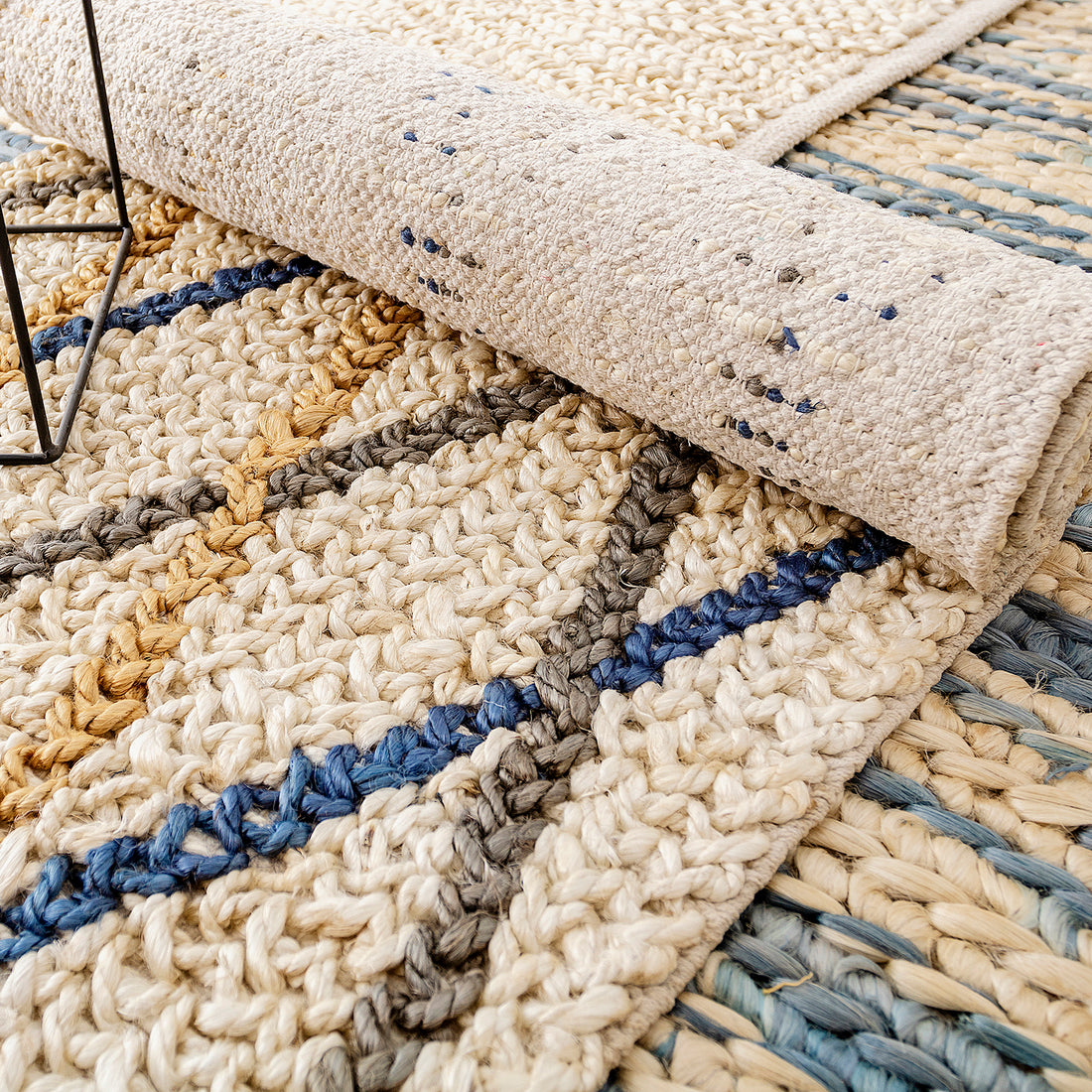
The Art of Crafting Jute Rugs: From Plant to Floor
Share
Jute rugs are cherished for their natural beauty, durability, and eco-friendly qualities. The journey of a jute rug from plant to finished product is a fascinating process that combines traditional craftsmanship with sustainable practices. Let's explore the intricate steps involved in creating these timeless pieces.
1. Cultivation of Jute Plants
The journey begins in the fertile fields of South Asia, primarily in Bangladesh and India, where jute plants are cultivated. Jute, known as the "Golden Fiber," thrives in warm, humid climates and requires minimal pesticides and fertilizers, making it an environmentally friendly crop. The plants reach maturity in about 4-6 months, growing to a height of 10-12 feet.
2. Harvesting
When the plants are ready, they are harvested by hand, a labor-intensive process that ensures the fibers remain intact. The stems are cut close to the ground and bundled together for the next stage: retting.
3. Retting
Retting is a crucial step in jute processing where the bundles of jute stems are soaked in water, usually in slow-moving rivers or ponds. This process takes about 10-30 days and allows the outer layer of the stems to decompose, separating the fibers from the woody core. Traditional retting methods use natural water sources, ensuring minimal environmental impact.
4. Stripping and Washing
After retting, the fibers are stripped from the stems by hand, a skill passed down through generations. The fibers are then thoroughly washed to remove any remaining plant material and impurities. This washing process is done in clean water to ensure the highest quality fibers.
5. Drying
The washed fibers are spread out in the sun to dry. Sun-drying is an essential step as it helps in bleaching the fibers naturally, enhancing their golden hue. Once dried, the fibers are gathered and bundled for further processing.
6. Spinning
The dried jute fibers are spun into yarn using either traditional spinning wheels or modern machinery. Spinning transforms the raw fibers into strong, uniform threads that can be easily woven. This step requires precision and skill to ensure the yarn is consistent in thickness and strength.
7. Weaving
Weaving is the heart of jute rug making. Skilled artisans use handlooms or power looms to weave the jute yarn into rugs. The weaving process involves interlacing the yarns to create various patterns and textures, ranging from simple and rustic to intricate and detailed designs. Each rug is a testament to the artisan's craftsmanship and creativity.
8. Finishing
Once the rug is woven, it undergoes finishing touches to enhance its appearance and durability. This includes trimming loose threads, reinforcing edges, and sometimes dyeing the rug to achieve the desired color. Natural dyes are often used to maintain the eco-friendly nature of jute rugs.
9. Quality Control
Every jute rug undergoes a thorough quality control process to ensure it meets high standards. This includes checking for uniformity in weave, color consistency, and overall craftsmanship. Only the finest rugs make it through this rigorous inspection.
10. Packaging and Distribution
The finished rugs are then carefully packaged to protect them during transport. They are distributed to various markets around the world, ready to bring natural beauty and warmth to homes everywhere.
Conclusion
The creation of a jute rug is a journey that blends nature's bounty with human ingenuity. From the cultivation of jute plants to the intricate weaving by skilled artisans, each step is a testament to sustainable practices and traditional craftsmanship. By choosing a jute rug, you not only bring a piece of natural elegance into your home but also support environmentally friendly and ethically produced products.